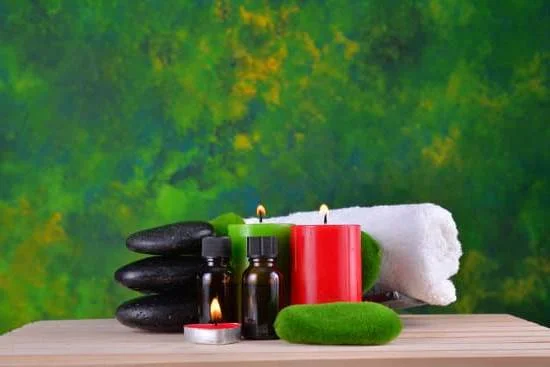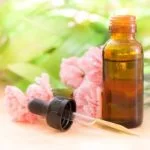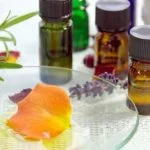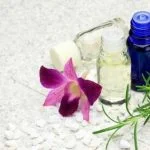Aromatherapy has been practiced for centuries as a natural way to promote physical and emotional well-being. In this article, we will provide an in-depth guide on how to create all natural aromatherapy oils right in the comfort of your own home.
Aromatherapy oils, also known as essential oils, are highly concentrated plant extracts that can be used for their various therapeutic benefits. From relaxation and stress relief to skincare and beyond, these oils have a wide range of uses and applications.
Aromatherapy has deep roots in history, with evidence of its use dating back thousands of years across different cultures. It is based on the belief that natural aromatic compounds found in plants can have a positive impact on the body and mind. In this introductory section, we will explore the benefits and uses of all natural aromatherapy oils, as well as provide a brief historical overview of aromatherapy and its close connection to natural oils.
By understanding the basics of aromatherapy and selecting the right essential oils, you can harness the power of nature to enhance your overall well-being. We’ll also dive into the importance of using all natural ingredients for aromatherapy oils, highlighting the potential risks associated with synthetic or adulterated products.
If you’ve ever wondered about the world of aromatherapy or wanted to create your own blends of all natural aromatherapy oils, then buckle up. This comprehensive guide will equip you with everything you need to know to get started on your journey towards holistic wellness.
Understanding the Basics of Aromatherapy
Aromatherapy is a holistic healing treatment that uses natural plant extracts to provide physical and psychological benefits. These aromatic oils, also known as essential oils, are extracted from various parts of plants such as flowers, leaves, seeds, roots, and fruits. The practice of aromatherapy has been around for centuries and has been used for its therapeutic properties. It is believed to promote overall well-being and improve emotional and physical health.
Principles and Practices of Aromatherapy
The principles of aromatherapy are rooted in the idea that the inhalation or application of essential oils can stimulate the body’s natural healing process. When inhaled, the aroma of these oils can travel through the bloodstream to promote relaxation, alleviate stress, enhance mood, boost immunity, and even alleviate certain medical conditions. Understanding how different essential oils interact with the body helps practitioners create blends that address specific health concerns.
Importance of Using All Natural Ingredients
When it comes to creating aromatherapy oils, using all-natural ingredients is crucial. Synthetic fragrances may have negative effects on the body and do not offer therapeutic benefits. By opting for all natural essential oils obtained from plants cultivated without pesticides or synthetic chemicals, you can ensure that your aromatherapy experience is safe and beneficial. Additionally, pure carrier oils derived from natural sources play a key role in diluting essential oils without compromising their efficacy.
In essence, understanding the basics of aromatherapy involves realizing its potential for promoting physical and mental wellness through the use of all-natural plant extracts. By grasping this foundation along with the importance placed on choosing natural ingredients for creating aromatherapy oils, individuals can harness their deep-seated restorative potential for optimal overall health.
Selecting the Right Essential Oils
Essential oils are the building blocks of aromatherapy, and selecting the right ones is crucial to creating high-quality, all natural aromatherapy oils. When choosing essential oils for your blends, it’s important to consider the properties and benefits of each oil, as well as its compatibility with other oils.
Identifying the Best Essential Oils
There is a wide variety of essential oils available, each with its own unique properties and benefits. Some popular essential oils for aromatherapy include lavender, eucalyptus, peppermint, tea tree, and lemon. These oils are known for their soothing, purifying, and invigorating qualities, making them versatile options for creating all natural aromatherapy oils.
When selecting essential oils, consider the specific needs or goals you have for your aromatherapy blends. Whether you’re looking to promote relaxation, boost energy levels, or alleviate stress and anxiety, there are essential oils that can support these intentions.
Where to Source High-Quality Essential Oils
To ensure that you are using pure and high-quality essential oils in your aromatherapy creations, it’s important to source them from reputable suppliers. Look for suppliers that offer organic or wildcrafted essential oils, as these are typically free from synthetic additives and pesticides.
You can also explore local farmer’s markets or specialized stores that carry natural products. Additionally, some online retailers offer a wide selection of high-quality essential oils from trusted brands. Before making a purchase, be sure to read reviews and research the supplier’s sourcing and production practices to ensure you are getting authentic and pure essential oils.
Overall how to create all natural aromatherapy oils involves careful consideration when selecting essential oils as they form the foundation of your aromatic creations. By choosing high-quality essential oils that align with your needs and preferences, you can create effective and beneficial all natural aromatherapy blends for various uses.
Carrier Oils and Their Role in Aromatherapy
When it comes to creating all natural aromatherapy oils, carrier oils play a crucial role in the process. These oils, also known as base oils, are used to dilute essential oils before they are applied to the skin or used for other purposes. Carrier oils not only help with the application of essential oils but also offer their own therapeutic benefits. Understanding the different types of carrier oils and their properties is essential for creating high-quality aromatherapy blends.
One of the key factors to consider when selecting carrier oils for aromatherapy is their absorption rate. Some carrier oils are fast-absorbing, while others are slower to absorb into the skin. This factor is important when determining how quickly you want the aromatherapy blend to be absorbed by the body.
Additionally, certain carrier oils have specific properties that can complement or enhance the effects of essential oils. For example, coconut oil is often used as a carrier oil due to its moisturizing and nourishing properties, making it a great choice for skincare aromatherapy blends.
When sourcing carrier oils for creating all natural aromatherapy blends, it’s important to look for high-quality, organic options. Cold-pressed or expeller-pressed carrier oils retain more of their natural beneficial compounds compared to those produced with heat or chemicals.
Additionally, consider the shelf life of carrier oils and how they will be stored and used over time. Ensuring that carrier oils are properly stored in dark glass bottles away from direct sunlight will help maintain their freshness and efficacy.
Understanding the role and properties of different carrier oils is crucial in creating all natural aromatherapy blends that are safe and effective. By carefully selecting high-quality carrier oils and understanding their benefits, you can create personalized aromatherapy blends that cater to your specific needs and preferences.
Methods of Creating Aromatherapy Oils
Creating all natural aromatherapy oils can be a rewarding and fulfilling experience. Whether you are looking to create customized blends for personal use or to share with others, understanding the methods of creating aromatherapy oils is essential. Below are some popular methods for creating all natural aromatherapy oils:
1. Distillation: This method involves using heat to vaporize the essential oils from plant material and then condensing the vapor back into a liquid form. It is commonly used for extracting oils from flowers, leaves, and other delicate plant parts.
2. Infusion: Infusing carrier oils with botanicals is a simple yet effective method for creating aromatherapy oils. This involves placing plant material (such as dried herbs or flower petals) in a carrier oil, and allowing it to steep over time to extract the aromatic properties.
3. Maceration: Similar to infusion, maceration involves soaking plant material in a carrier oil to extract its aromatic properties. This method is often used for harder plant materials such as roots or barks.
No matter which method you choose, it’s important to start with high-quality ingredients and follow proper safety precautions throughout the process. With patience and attention to detail, you can create unique and all natural aromatherapy oils that cater to your specific needs and preferences.
Safety Precautions and Best Practices
Creating all natural aromatherapy oils is a wonderful way to harness the power of essential oils for their therapeutic and aromatic benefits. However, it is important to be aware of safety precautions and best practices when working with these potent oils.
When creating all natural aromatherapy oils, it’s crucial to handle essential oils with care. These concentrated plant extracts can be irritating to the skin and should never be used undiluted. Always dilute essential oils in a carrier oil before applying them to the skin, and perform a patch test before using a new oil to check for any adverse reactions. Additionally, essential oils should never be ingested unless under the guidance of a qualified professional.
Proper storage of aromatherapy oils is also key in maintaining their potency and safety. Essential oils should be kept in dark-colored glass bottles away from direct sunlight and heat to prevent oxidation. Carrier oils used in aromatherapy blends should also be stored properly to avoid rancidity. Overall, maintaining good hygiene practices when handling essential oils will ensure that they remain safe and effective for use.
To create all natural aromatherapy oils that are both safe and beneficial, it’s important to follow best practices for formulation and usage. This includes using reputable sources for essential oils, carefully following recommended dilution ratios, and being mindful of any contraindications or precautions associated with specific essential oils. By incorporating these safety considerations into your practice of creating aromatherapy oils, you can enjoy the many benefits of these natural remedies while minimizing any potential risks.
| Safety Precautions | Best Practices |
|---|---|
| Handle essential oils with care | Use reputable sources for essential oils |
| Dilute essential oils before applying them to the skin | Follow recommended dilution ratios |
| Properly store essential and carrier oils | Be mindful of contraindications or precautions associated with specific essential oils |
Customizing Aromatherapy Oils
When it comes to creating all natural aromatherapy oils, customization is key to achieving the desired effects and benefits. Understanding how to create custom blends and combinations of essential oils is essential for catering to specific uses and individual preferences.
To create custom aromatherapy oils, start by identifying the desired benefits or effects. Whether it’s relaxation, energizing, focus, or immune support, different essential oils offer unique properties that can be combined to achieve the desired outcome. Researching the properties and benefits of various essential oils is crucial in the customization process.
Once you have a clear understanding of the properties of different essential oils, you can start experimenting with custom blends and combinations. It’s important to keep track of your recipes and combinations so that you can replicate successful blends in the future. Keeping a journal or log of your experiments will help you fine-tune your custom aromatherapy oil creations.
In addition to blending essential oils for customized aromatherapy oils, consider incorporating carrier oils into your blends as well. Carrier oils not only dilute the potency of essential oils but also offer their own therapeutic benefits. Some popular carrier oils include jojoba oil, sweet almond oil, coconut oil, and grapeseed oil. Experiment with different carrier oil combinations to find what works best for your customized aromatherapy oils.
| Customization Benefits | Customization Tips |
|---|---|
| Allows for tailored benefits based on individual needs | Research the properties of different essential oils |
| Provides flexibility in creating unique scents and experiences | Keep a journal or log of your custom blend experiments |
| Aids in addressing specific wellness goals and concerns | Experiment with different carrier oil combinations |
Incorporating Aromatherapy Oils Into Daily Life
Aromatherapy oils can be a wonderful addition to daily routines, offering a natural and holistic approach to wellness. Whether it’s for self-care, home ambiance, or overall well-being, incorporating all natural aromatherapy oils can elevate the everyday experience. Here are some creative and practical ways to integrate aromatherapy oils into your daily life:
- Diffusion: Use an essential oil diffuser to disperse the fragrance of your favorite aromatherapy oils throughout your home or workspace.
- Bath time: Add a few drops of essential oil to your bathwater for a relaxing and aromatic soak. Lavender, chamomile, and eucalyptus are popular choices for this purpose.
- Massage: Mix a few drops of essential oil with a carrier oil such as sweet almond or jojoba, and use it for a soothing massage at the end of a long day.
In addition to these direct applications, there are numerous other methods for infusing all natural aromatherapy oils into your daily routine. Consider creating your own custom blends tailored to specific needs and preferences, such as stress relief, mental clarity, or mood enhancement.
Furthermore, you can incorporate aromatherapy oils into your skincare routine by adding them to homemade lotions, creams, or facial mists. For an added touch of relaxation during yoga or meditation sessions, utilize calming essential oils like frankincense or sandalwood.
The possibilities for using all natural aromatherapy oils in daily life are endless. By harnessing their natural properties and benefits, you can create a truly personalized aromatic experience that enhances your overall well-being.
Conclusion
In conclusion, all natural aromatherapy oils offer a holistic and therapeutic approach to wellness and self-care. The use of essential oils has been deeply rooted in history, dating back to ancient civilizations that recognized the healing properties of plant extracts. Understanding the basics of aromatherapy and selecting the right essential oils are crucial steps in creating effective blends for a variety of purposes.
When it comes to creating all natural aromatherapy oils, it is essential to prioritize high-quality ingredients. This includes carefully selecting both essential oils and carrier oils, as well as understanding their properties and benefits. By following proper methods of creation, such as distillation or infusion, individuals can harness the full potential of these aromatic extracts. Furthermore, integrating safety precautions and best practices into the process ensures that the end product is not only effective but also safe for use.
As readers delve into the world of aromatherapy, they have the opportunity to customize their own blends according to their specific needs and preferences. From relaxation to concentration, there is a wide range of recipes and ideas for customizing aromatherapy oils.
Furthermore, incorporating these all natural blends into daily life can enhance overall well-being, from skincare routines to home environments. With so many possibilities for exploration and enjoyment, embracing all natural aromatherapy oils presents an exciting journey toward wellness and self-discovery.
Frequently Asked Questions
How Do You Make Natural Aromatherapy Oils?
Natural aromatherapy oils are made through the process of steam distillation or cold pressing. Steam distillation involves passing steam through plant material to extract the essential oils, while cold pressing is used for citrus fruits.
How Are Aromatherapy Oils Made?
Aromatherapy oils are made by extracting the natural oils from plants through processes such as steam distillation, cold pressing, or solvent extraction. Once extracted, the oils are then typically diluted with a carrier oil.
What All Do You Need to Make Essential Oils?
To make essential oils, you’ll need plant material such as flowers, leaves, or bark, as well as a method of extraction like steam distillation equipment or a cold press. Additionally, you’ll need a carrier oil for dilution and storage bottles for the finished product.

Are you looking for a natural way to improve your health and wellbeing?
If so, aromatherapy may be the answer for you.





